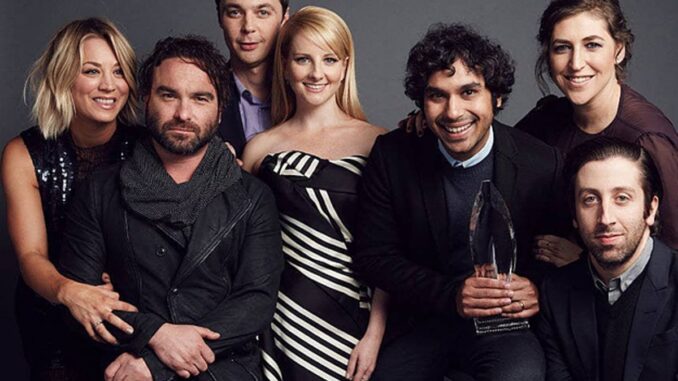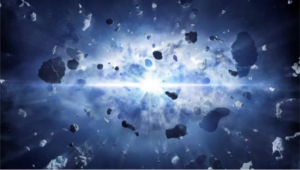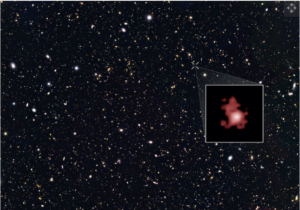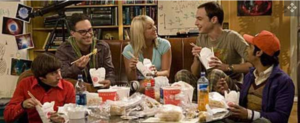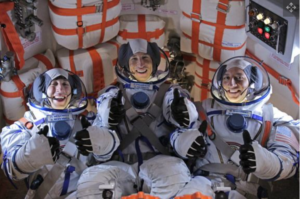Hubble was really the person who set up the observations. Evidence continued to mount, especially in the 1970s with the detection of the CMB. The term “Big Bang” was first used in the late 1940s by the astronomer Fred Hoyle — eventually, it caught on in the 1970s.
MODELLING THE BIG BANG
Because we can’t see it directly, scientists have been trying to figure out how to “see” the Big Bang through other measures. In one case, cosmologists are pressing rewind to reach the first instant after the Big Bang by simulating 4,000 versions of the current universe on a massive supercomputer.
“We are trying to do something like guessing a baby photo of our universe from the latest picture,” study leader Masato Shirasaki, a cosmologist at the National Astronomical Observatory of Japan (NAOJ), told our sister website Live Science.
With what is known about the universe today, the researchers in this 2021 study compared their understanding of how gravitational forces interacted in the primordial universe with their thousands of computer-modeled universes. If they could predict the starting conditions of their virtual universes, they hoped to be able to accurately predict what our own universe may have looked like back at the beginning.
Other researchers have chosen different paths to interrogate our universe’s beginnings.
In a 2020 study, researchers did so by investigating the split between matter and antimatter. In the study, not yet peer-reviewed, they proposed that the imbalance in the amount of matter and antimatter in the universe is related to the universe’s vast quantities of dark matter, an unknown substance that exerts influence over gravity and yet doesn’t interact with light. They suggested that in the crucial moments immediately after the Big Bang, the universe may have been pushed to make more matter than its inverse, antimatter, which then could have led to the formation of dark matter.
THE AGE OF THE UNIVERSE
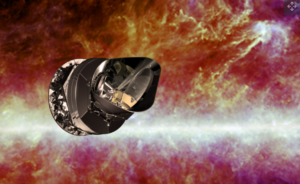
The CMB has been observed by many researchers now and with many spacecraft missions. One of the most famous space-faring missions to do so was NASA’s Cosmic Background Explorer (COBE) satellite, which mapped the sky in the 1990s.
Several other missions have followed in COBE’s footsteps, such as the BOOMERanG experiment (Balloon Observations of Millimetric Extragalactic Radiation and Geophysics), NASA’s Wilkinson Microwave Anisotropy Probe (WMAP) and the European Space Agency’s Planck satellite.
Planck’s observations, first released in 2013, mapped the CMB in unprecedented detail and revealed that the universe was older than previously thought: 13.82 billion years old, rather than 13.7 billion years old. The research observatory’s mission is ongoing and new maps of the CMB are released periodically.
The maps give rise to new mysteries, however, such as why the Southern Hemisphere appears slightly redder (warmer) than the Northern Hemisphere. The Big Bang Theory says that the CMB would be mostly the same, no matter where you look.
Examining the CMB also gives astronomers clues as to the composition of the universe. Researchers think most of the cosmos is made up of matter and energy that cannot be “sensed” with our conventional instruments, leading to the names “dark matter” and “dark energy.” It is thought that only 5% of the universe is made up of matter such as planets, stars and galaxies.
WHAT ARE GRAVITATIONAL WAVES?
While astronomers study the universe’s beginnings through creative measures and mathematical simulations, they’ve also sought proof of its rapid inflation. They have done this by observing gravitational waves, tiny perturbations in space-time that ripple outwards from great disturbances like, for instance, two colliding black holes or the universe’s birth.
According to leading theories, in the first second after the universe was born, our cosmos ballooned faster than the speed of light. (That, by the way, does not violate Albert Einstein’s speed limit. He once said that light speed is the fastest anything can travel within the universe — but that statement did not apply to the inflation of the universe itself.)
As the universe expanded, it created the CMB and a similar “background noise” made up of gravitational waves that, like the CMB, were a sort of static, detectable from all parts of the sky. Those gravitational waves, according to the LIGO Scientific Collaboration, produced a theorized barely-detectable polarization, one type of which is called “B-modes.”
In 2014, astronomers said they had found evidence of B-modes using an Antarctic telescope called “Background Imaging of Cosmic Extragalactic Polarization,” or BICEP2.
“We’re very confident that the signal that we’re seeing is real, and it’s on the sky,” lead researcher John Kovac, of the Harvard-Smithsonian Center for Astrophysics told Space.com in March 2014.
But by June, the same team said that their findings could have been altered by galactic dust getting in the way of their field of view. That hypothesis was supported by new results from the Planck satellite.
By January 2015, researchers from both teams working together “confirmed that the Bicep signal was mostly, if not all, stardust,” the New York Times said.
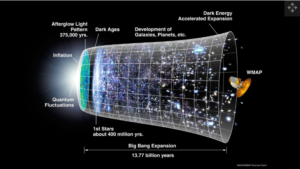
However, since then gravitational waves have not only been confirmed to exist, they have been observed multiple times.
These waves, which are not B-modes from the birth of the universe but rather from more recent collisions of black holes, have been detected multiple times by the Laser Interferometer Gravitational-Wave Observatory (LIGO), with the first-ever gravitational wave detection taking place in 2016.
A major gravitational wave breakthrough was announced on June 28, 2023 when teams of scientists around the world reported the discovery of a “low-pitch hum” of these cosmic ripples flowing through the Milky Way. While astronomers don’t definitively know what’s causing the hum, the detected signal is “compelling evidence” and consistent with theoretical expectations of gravitational waves emerging from copious pairs of “the most massive black holes in the entire universe” weighing as much as billions of suns, said Stephen Taylor, a gravitational wave astrophysicist at Vanderbilt University in Tennessee who co-led the research.
WAS THE BIG BANG AN EXPLOSION?
Although the Big Bang is often described as an “explosion”, that’s a misleading image. In an explosion, fragments are flung out from a central point into a pre-existing space. If you were at the central point, you’d see all the fragments moving away from you at roughly the same speed.
But the Big Bang wasn’t like that. It was an expansion of space itself – a concept that comes out of Einstein’s equations of general relativity but has no counterpart in the classical physics of everyday life. It means that all the distances in the universe are stretching out at the same rate. Any two galaxies separated by distance X are receding from each other at the same speed, while a galaxy at distance 2X recedes at twice that speed.
THE EXPANSION OF THE UNIVERSE
The universe is not only expanding, but expanding faster. This means that with time, nobody will be able to spot other galaxies from Earth or any other vantage point within our galaxy.
“We will see distant galaxies moving away from us, but their speed is increasing with time,” Harvard University astronomer Avi Loeb said in a March 2014 Space.com article.
“So, if you wait long enough, eventually, a distant galaxy will reach the speed of light. What that means is that even light won’t be able to bridge the gap that’s being opened between that galaxy and us. There’s no way for extraterrestrials on that galaxy to communicate with us, to send any signals that will reach us, once their galaxy is moving faster than light relative to us.”
“It’s hard to build models of inflation that don’t lead to a multiverse,” Alan Guth, a theoretical physicist at the Massachusetts Institute of Technology, said during a news conference in March 2014 concerning the gravitational waves discovery. (Guth is not affiliated with that study.)
“It’s not impossible, so I think there’s still certainly research that needs to be done. But most models of inflation do lead to a multiverse, and evidence for inflation will be pushing us in the direction of taking [the idea of a] multiverse seriously.”
While we can understand how the universe we see came to be, it’s possible that the Big Bang was not the first inflationary period the universe experienced. Some scientists believe we live in a cosmos that goes through regular cycles of inflation and deflation, and that we just happen to be living in one of these phases.
JWST AND THE BIG BANG
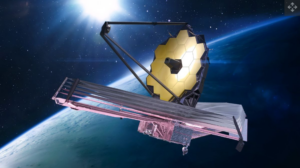
A telescope is almost like a time machine, allowing us to peer back into the distant past. With the aid of the Hubble space telescope, NASA has shown us galaxies as they were many billions of years ago — and Hubble’s successor, the James Webb Space Telescope, has the ability to look even deeper into the past.
NASA hopes it will see all the way back to when the first galaxies formed, nearly 13.6 billion years ago. And unlike Hubble, which sees mainly in the visible waveband, JWST is an infrared telescope — a big advantage when looking at very distant galaxies. The expansion of the universe means that waves emitted from them are stretched out, so light that was emitted at visible wavelengths actually reaches us in the infrared.
